- Home
- Alison Weir
Mary Boleyn: The Great and Infamous Whore Page 7
Mary Boleyn: The Great and Infamous Whore Read online
Page 7
There is no evidence that Elizabeth’s father ever benefited materially from his daughter’s liaison with the King and its natural consequences. Her husband was not knighted until 1524 and thereafter held the office of Sheriff of Lincoln for two years.87 He is also recorded as “belonging to the King’s Chamber,”88 so he enjoyed some influence at court, possibly on his own merits. In 1525, Tailboys was appointed Keeper of Tattershall Castle,89 and he and Elizabeth took up residence in Lincolnshire, where they lived in a house built on to the fourteenth century castle at South Kyme, his family home; the house was demolished in 1725, and all that remains today is the castle tower. Tailboys represented Lincoln as Knight of the Shire in the Parliament that met in November 1529, and it was in this Parliament that he was created Baron Tailboys,90 possibly in consequence of his wife’s position as mother of the King’s bastard son.91 Tailboys and Elizabeth produced several children, of whom three survived into adulthood, before his death on April 15, 1530. He was buried in the twelfth century church of the Augustinian priory of St. Mary and All Saints at South Kyme, and when it was largely rebuilt in 1805 (only a Norman doorway remains), his leaden coffin was discovered, along with those of three of his children by Elizabeth Blount.92
In 1532, still resident at Kyme, Elizabeth turned down a proposal of marriage from Lord Leonard Grey93 in favor of marrying a royal ward, Edward Fiennes de Clinton, 9th Baron Clinton, who was fourteen years her junior, and would be created Earl of Lincoln in 1572 by Queen Elizabeth I. They had married before February 1534,94 and Elizabeth bore Clinton four daughters. She was still living on February 6, 1539, but had died by June 15, 1541. She was buried with her first husband at Kyme, and monumental inscriptions to them both were put up in the church.95
Henry Fitzroy was Henry VIII’s only acknowledged bastard son—“my worldly jewel,” as he called the boy. Lord Herbert makes it clear that Fitzroy was “much avowed [acknowledged]” by Henry in the years prior to the child’s ennoblement at the age of six. Cardinal Wolsey was the infant’s godfather at his baptism, and afterward the King entrusted Wolsey with overall responsibility for young Fitzroy’s care, although it would seem that the child remained with his mother during his early years. Henry provided him with the best education, and, according to William Franklyn, Archdeacon of Durham, the boy grew into “a child of excellent wisdom and towardness; and, for his good and quick capacity, retentive memory, virtuous inclination to all honor, humanity, and goodness, I think hard it would be to find any creature living twice his age, able or worthy to be compared with him.”96
Herbert described Henry Fitzroy as “proving so equally like both his parents, that he became the best emblem of their mutual affection.” From the first, bastard though the boy was, Henry VIII would groom him for kingship.
3
Into the Realm of France
Sir Thomas Boleyn was one of the gallant knights who took part in the great tournament held in February 1511 at Westminster to honor the birth of Henry VIII’s first son, Henry, Prince of Wales, who had been born on New Year’s Day. But, to the great grief of his parents, the infant prince died only a week later, and Sir Thomas soon found himself one of the bearers at the funeral in Westminster Abbey.1 That is prime evidence that he was already prominent at court and close to Henry VIII. At a tournament on May 23, 1510, at Greenwich Palace, he had jousted against the King himself.2 By 1511, Sir Thomas was well established as one of Henry VIII’s favorite courtiers, and more lucrative offices were coming his way. He was appointed keeper of the royal park of Bestwood, Nottinghamshire, that year, and Sheriff of Kent for twelve months, then made joint Constable of Norwich Castle on February 15, 1512. He was again Sheriff of Kent from 1517 to 1518.3
Boleyn, being a great linguist, an invaluable asset in the world of Tudor diplomacy, was sent in May 1512, with Sir Richard Wingfield—who lived at Stone in Kent, not far from Hever—and John Young, on an embassy to the Holy Roman Emperor, Maximilian I, in Flanders. On April 5, 1513, Boleyn and Sir Edward Poynings concluded a treaty with Pope Julius II and Maximilian’s daughter, Margaret of Austria, Regent of the Netherlands, at Malines near Brussels, when they joined forces with Henry VIII as the “Holy League” to make war against the French. Sir Thomas returned to England in June 1513.4 Later that summer, when Henry VIII invaded France, Boleyn led a company of a hundred men5 and took part in the siege of Thérouanne and the Battle of the Spurs, both English victories.
At the turn of the sixteenth century, Andreas Franciscus, a continental visitor to England, observed that Englishmen, “contrary to nature,” showed no love to their children, lavishing all their love on their wives. Thomas Boleyn seems to have lavished little love on either, but he was a cultivated man and he plainly cared about education, seeing it as the pathway to success. He was at the forefront of innovation in having at least one of his daughters tutored to a high standard. That was Anne, whom Lord Herbert states was so “singular” in “towardness” that her parents “took all possible care for her good education.” Because Anne later became Queen of England, we know quite a lot about her intellectual abilities and interests, and can infer from those something of her education, but of her sister Mary’s we know next to nothing, save that she was literate, read books and could write a competent letter. No one mentioned her singular towardness, and Ives’s reference to her “evident inferior potential” may be apposite. Nevertheless, Sir Thomas Boleyn afforded both his daughters a training that would befit them for court life and good marriages.6
There is a consensus of opinion among historians that Mary “was apparently less of an intellectual than the rest of her family.”7 It has even been claimed that she was “neglected from infancy by her parents,”8 although there is no evidence for this—indeed, rather the contrary. Just one historian suggests that “to judge from her later history, [Mary] may well have been intelligent and opportunistic.”9 But others disagree, asserting that Anne was “far more intelligent and far more applied” than Mary, as “the respective courses of [the sisters’] lives would amply demonstrate.”10 Anne “was clearly the brighter, and considered to be the more teachable,”11 while Mary had “only a trace of Anne’s great vitality, with less brains, and much less determination.”12 She was “neither accomplished nor witty.”13 “Anne appears to have outstripped Mary in her education, and she quickly became the focus of Thomas Boleyn’s ambition for his daughters.”14 Anne, it seems, was his favorite.15
All these assertions—going on purely circumstantial contemporary evidence—are probably percipient, yet it is barely conceivable that Mary, being the elder daughter, would not initially have been afforded an education similar to that which her younger sister received.16 And even if Thomas Boleyn gave up on that at some point, finding that Mary was a pretty girl but not as bright as her sister,17 her birth and her father’s position would have been sufficient to secure her a good marriage.
This was a time when medieval notions of education being a danger to the moral welfare of girls were being overturned. Sir Thomas More’s house in London was virtually a female academy: he afforded his clever daughters a fine classical education, no different from that arranged for his son. More’s success—showing that women could be both learned and virtuous—undoubtedly influenced Katherine of Aragon in planning the education of her daughter, the Princess Mary, born in 1516; she took the advice of the Spanish educationist Juan Luis Vives, who prescribed a vigorous curriculum. But that was years after Thomas Boleyn had afforded his daughters a rather advanced education for the period, which also placed emphasis on all the accepted branches of virtuous instruction, such as music, singing, and dancing,18 essential accomplishments for girls who were destined to be the ornaments of courts, as clearly their father intended. The composer Richard Davy was chaplain to Thomas Boleyn from 1506 to 1515, when some of his best church music was written, so the sisters had the benefit of growing up in a household in which music was integral and a sophisticated example was set.19 Mary (like her sister) may have grown up to be a
n accomplished musician,20 but this is only an assumption.21
The Boleyn daughters were taught to read and to write in a fine Italianate hand, as Anne’s letters prove; only two of Mary’s letters survive to show that her style was not as elegant as her sister’s, or as grammatical—a failing of which she was aware, for she referred to one being “scribbled with her ill hand,”22 although it does show her to have been articulate.23 It was not uncommon, however, for educated aristocrats, both men and women, to write and spell badly.24 Mary does reveal in that same letter that she read “old books” about kings and queens, presumably for pleasure, so no doubt she read others also.
All the Boleyn children were taught to speak fluent French. That was clearly very important to their father. As we will see, Anne initially struggled with that language, and only years of living abroad at the courts of Brussels and France made her proficient in it. Mary seems to have had a better aptitude for French, which shows she was not a dullard. There is no evidence to support the assertion that “both daughters occasionally accompanied their father on his missions abroad.”25 It was he who accompanied them when they went to foreign courts.
Mary and Anne would have received instruction in the traditional aristocratic pursuits of riding, hunting, and hawking, at which their father excelled, and instruction in the rituals and beliefs of the pre-Reformation Catholic Church—doctrines that the Boleyn family would one day challenge. Their lives at Hever Castle would have been conventional, ordered by religious and domestic routines, and the unchanging round of the seasons: Lady Day, March 25, the official beginning of the medieval year; Lent; Easter; May Day, when young girls rose early to bring in the May; Michaelmas, and the start of the farming year; Harvest-tide; Advent; Christmas and the Twelfth Night celebrations, and Candlemas. The cycle was punctuated by numerous holy and saints’ days. There would have been a chapel in the medieval castle, where the family chaplain would have celebrated Mass daily.
Hever Castle boasted a great hall, a symbol of the Boleyns’ wealth and status, where the family plate would have been displayed on a buffet, and the prevailing fashion dictated sparse furnishings consisting largely of hangings, chests, and side tables. But at this period, when personal privacy was beginning to be seen as more desirable than communal living, such halls were going out of fashion, and were used mainly for celebrations and entertaining, while family life was generally conducted, and meals taken, in the privacy of the parlor.
On wet days, instead of walking in the gardens, riding out on horseback, hunting or hawking, the sisters might take their exercise in the long gallery built by their father. Their parents would have slept in the Great Chamber, which also doubled as a reception room in Tudor times, and they themselves would have occupied lesser bedchambers. We have no way of knowing which chambers Mary and Anne occupied at Hever, but they would probably have had a fireplace, small diamond-paned windows, and wainscoted or painted walls. Their beds would have been solid wooden structures with a tester or canopy and expensive curtains and hangings of silk or damask. They would have had a chair or stool, a chest for clothes and linen, a cupboard to hold a basin and ewer, cosmetic jars, a mirror of burnished silver, and a chamber pot.
The family’s steward held sway in the estate office, where tenants came to pay rent or settle disputes, and accounts were kept, with the aid of a checkered counting table or cloth. This room was very much a male preserve, but Lady Boleyn, the mistress of the castle, would also have had her office, and from here she ruled her household, ordering the servants and overseeing the provisioning and feeding of the family and their large staff of servants. Traditionally, even great ladies had their still rooms, where they might distill sweet waters, or produce confits and conserves, or make medicines and poultices, using the herbs that grew in the gardens. In these tasks, Mary and Anne would have assisted their mother, for it was considered essential that girls of good birth were taught the skills that would enable them to run a great household. They would have learned that a lady should keep her servants busy not only by precept, but by example.
Breakfast in those days was served early, at six or seven o’clock, and consisted of meat or pottage (broth), bread and ale. Dinner—the main meal of the day—was usually eaten late in the morning. The Boleyns, with their rich estates, would have eaten well, if not lavishly, and been offered several courses, with many dishes at each; and they might well have followed the fashion to remain at table until two or three in the afternoon. Supper, a lighter repast, was at five or six o’clock. All the food was organic, and much of it would have been fresh and flavored with herbs and expensive spices. The parlor where the family ate would have been furnished with a long table, a chair for Sir Thomas Boleyn at its head, and stools and benches for his wife, his children, and his mother. The walls would have been paneled with wainscot, perhaps with painted friezes or scenes on the plaster above, and hung with tapestries, painted cloths, or pictures.
Rooms were heated by open fires or braziers, and lit by beeswax candles, which were often set in beams or wheel-shaped structures and hoisted into place by a pulley. Only the better-off could afford sufficient lighting to allow them to stay up in the evenings, when Mary and Anne and their brothers probably amused themselves by playing cards, dice, or games such as chess or tables (backgammon); or they might have passed their leisure time in reading, singing, making music, sewing, embroidering, writing poetry, or teasing each other with riddles, which was a popular pastime. Probably they danced too, practicing the latest steps against the time they might be summoned to court, which must have been the greatest desire of their childhood.
The clothes the sisters would have worn in their everyday life were modestly cut, of good quality and the same as those worn by their elders. These comprised a washable linen shift, worn next to the skin, a petticoat lined perhaps with fur, and a long, square-necked gown lined with richer fur; this had a train that they were taught to carry looped over one arm. The sleeves of the gown were either long and hanging, or tight with fur-lined cuffs. Unmarried girls customarily wore their hair long and loose, although they may occasionally have worn caps or hoods with long lappets hanging down over their shoulders. Their stockings were of black wool, and their shoes had double soles and broad toes.
As they grew older, the Boleyn sisters would have enjoyed certain freedoms. English women, noted a Dutch observer, Emanuel van Meteren, did not lead cloistered lives. They were well dressed and enjoyed showing off their finery when shopping, and going to market. They employed their time walking, riding, playing cards, visiting friends and keeping company, conversing with their “gossips” and neighbors, and making merry at childbirths, christenings, churchings, and funerals. In these pursuits, Mary and Anne would have been chaperoned by their mother or governess, for unmarried girls were kept “rigorously and strictly” to protect their virtue.
Above all, the Boleyn sisters would have been brought up to render unconditional obedience to their father and, later, to the husbands he would choose for them.26 They would have learned that women were subordinate creatures, infants in law and subject to the dominion of men.
Anne grew up to be a talented musician, an accomplished singer and dancer, a competent poet, a trendsetter in fashions, a skilled needlewoman, and a witty conversationalist. Mary is not recorded as having any of those gifts, although she probably had some ability in music and dancing, which was desirable at court and would, later, have been pleasing to Henry VIII. And when the tutors he had employed had done all they could, Sir Thomas Boleyn unashamedly used his official connections to secure “the extra advantage of a continental finish for his daughters.”27 Yet although Mary was the elder, it was the sparkling Anne who was found a position at court first.28
It is possible that Anne was chosen to go to the court of the Archduchess Margaret of Austria, Regent of the Netherlands, because she needed to complete her education, when Mary had already done so.29 But there was far more than education at stake, for the Archduchess’s court offered
many opportunities and advantages for a young girl of good birth. Anne’s acute intellect is more likely to have been the reason why her father decided that she, rather than her elder sister, should benefit from being educated abroad:30 while at Malines, he boasted to Margaret of Austria of the virtues and accomplishments of “la petite Boulain” (as he called his younger daughter in one of his letters31) and, as a result, the erudite Margaret offered Anne, then about twelve years old, a place in her household as one of her eighteen “filles d’honneur.” The name Boleyn appears on the list of her ladies.
Margaret’s court was regarded as one of the finest finishing schools in Europe.32 According to the Emperor Maximilian, it was usual for maids of honor to be aged about thirteen or fourteen;33 this was because they were expected to be able to attract advantageous marriages at court, advance the interests and ambitions of their family, and perform the decorative and social functions required of them. Competition for places was fierce, and parents and guardians were prepared to lay out substantial financial inducements in order to secure the honor of an appointment for their daughters. Moreover, there were more chances of success if a girl had the kind of attributes that would make her an ornament of the court; she had to know how to dress fashionably, dance, sing, entertain her royal mistress and important visitors with witty and amiable conversation, and understand how to conduct herself when in attendance in public and on state occasions. It was for this that Thomas Boleyn had provided his daughters with a sophisticated education, and clearly he did not balk at the considerable outlay required to provide them with suitable court attire. It could never be claimed, as Mary Luke does, that he sought places at court for them to rid himself of the expense of their upbringing.

 Richard III and the Princes in the Tower
Richard III and the Princes in the Tower Britain's Royal Families: The Complete Genealogy
Britain's Royal Families: The Complete Genealogy The Lady in the Tower: The Fall of Anne Boleyn
The Lady in the Tower: The Fall of Anne Boleyn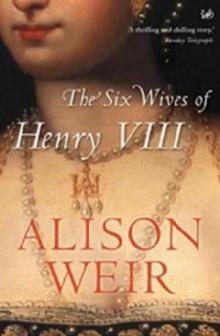 Six Wives of Henry VIII
Six Wives of Henry VIII Elizabeth of York: A Tudor Queen and Her World
Elizabeth of York: A Tudor Queen and Her World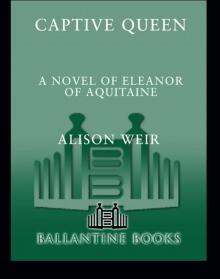 Captive Queen
Captive Queen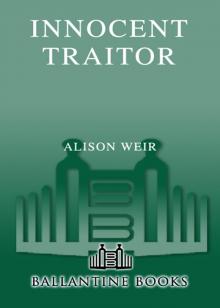 Innocent Traitor
Innocent Traitor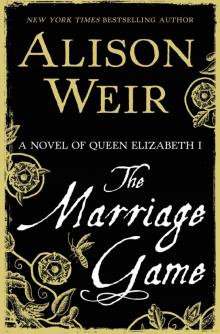 The Marriage Game
The Marriage Game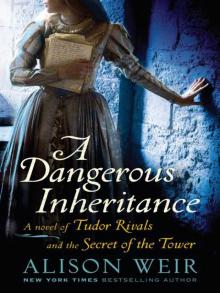 A Dangerous Inheritance
A Dangerous Inheritance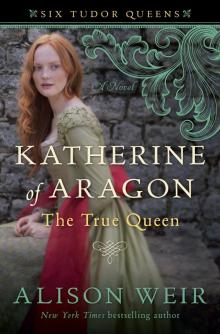 Katherine of Aragón: The True Queen
Katherine of Aragón: The True Queen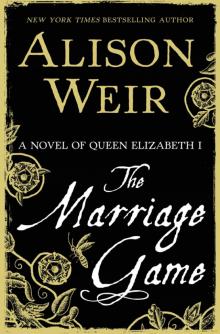 The Marriage Game: A Novel of Queen Elizabeth I
The Marriage Game: A Novel of Queen Elizabeth I Princes in the Tower
Princes in the Tower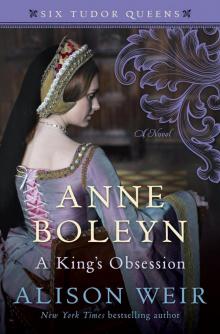 Anne Boleyn: A King's Obsession
Anne Boleyn: A King's Obsession Traitors of the Tower
Traitors of the Tower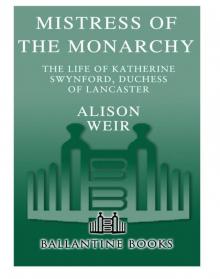 Mistress of the Monarchy: The Life of Katherine Swynford, Duchess of Lancaster
Mistress of the Monarchy: The Life of Katherine Swynford, Duchess of Lancaster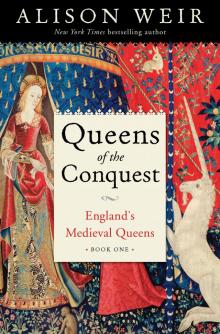 Queens of the Conquest: England’s Medieval Queens
Queens of the Conquest: England’s Medieval Queens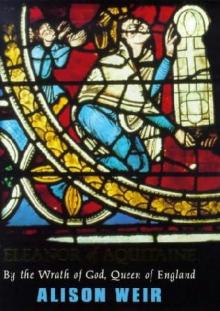 Eleanor of Aquitaine: A Life
Eleanor of Aquitaine: A Life Mary, Queen of Scots, and the Murder of Lord Darnley
Mary, Queen of Scots, and the Murder of Lord Darnley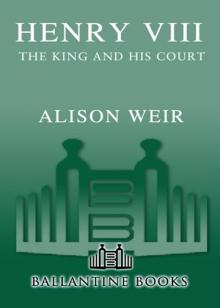 Henry VIII: The King and His Court
Henry VIII: The King and His Court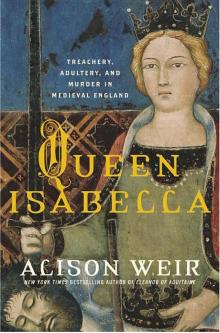 Queen Isabella: Treachery, Adultery, and Murder in Medieval England
Queen Isabella: Treachery, Adultery, and Murder in Medieval England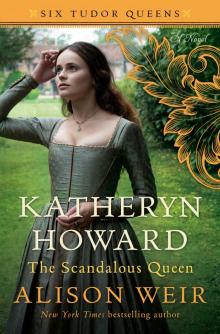 Katheryn Howard, the Scandalous Queen
Katheryn Howard, the Scandalous Queen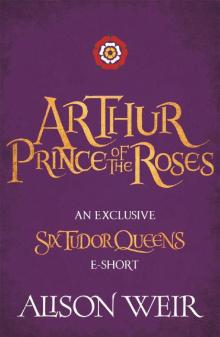 Arthur- Prince of the Roses
Arthur- Prince of the Roses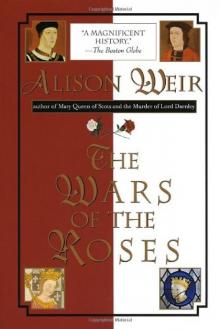 The Wars of the Roses
The Wars of the Roses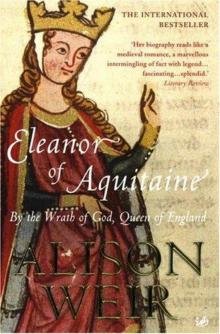 Eleanor of Aquitaine: By the Wrath of God, Queen of England
Eleanor of Aquitaine: By the Wrath of God, Queen of England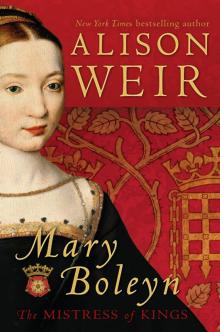 Mary Boleyn: The Great and Infamous Whore
Mary Boleyn: The Great and Infamous Whore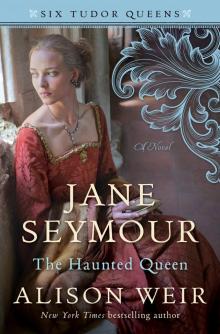 Jane Seymour: The Haunted Queen
Jane Seymour: The Haunted Queen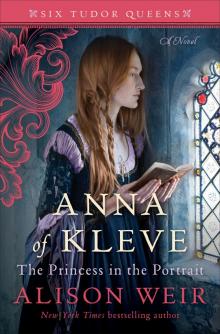 Anna of Kleve, the Princess in the Portrait
Anna of Kleve, the Princess in the Portrait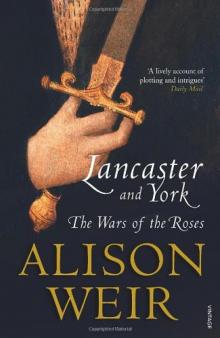 Lancaster and York: The Wars of the Roses
Lancaster and York: The Wars of the Roses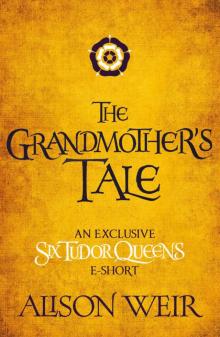 The Grandmother's Tale
The Grandmother's Tale The Princess of Scotland (Six Tudor Queens #5.5)
The Princess of Scotland (Six Tudor Queens #5.5)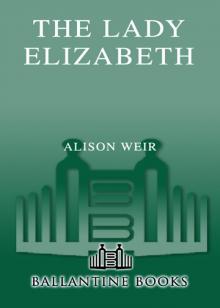 The Lady Elizabeth
The Lady Elizabeth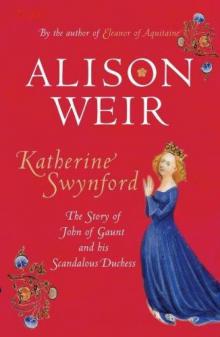 Katherine Swynford: The Story of John of Gaunt and His Scandalous Duchess
Katherine Swynford: The Story of John of Gaunt and His Scandalous Duchess The Curse of the Hungerfords
The Curse of the Hungerfords The Lost Tudor Princess: The Life of Lady Margaret Douglas
The Lost Tudor Princess: The Life of Lady Margaret Douglas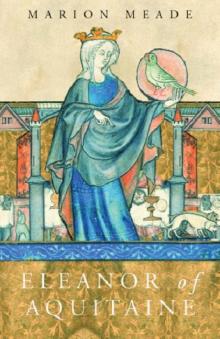 Eleanor of Aquitaine
Eleanor of Aquitaine Mistress of the Monarchy
Mistress of the Monarchy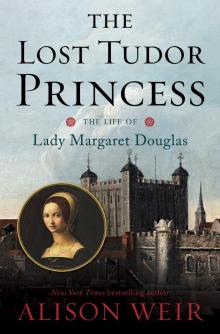 The Lost Tudor Princess
The Lost Tudor Princess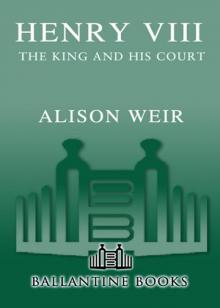 Henry VIII
Henry VIII Anne Boleyn, a King's Obsession
Anne Boleyn, a King's Obsession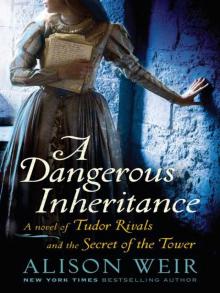 A Dangerous Inheritance: A Novel of Tudor Rivals and the Secret of the Tower
A Dangerous Inheritance: A Novel of Tudor Rivals and the Secret of the Tower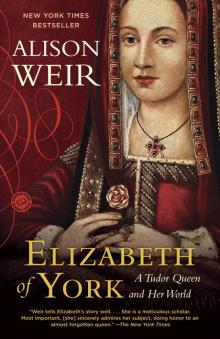 Elizabeth of York
Elizabeth of York Katherine of Aragon, the True Queen
Katherine of Aragon, the True Queen Katherine Swynford
Katherine Swynford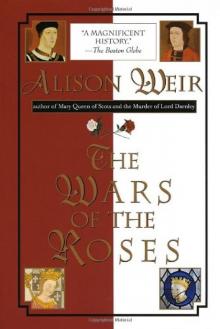 Wars of the Roses
Wars of the Roses Queens of the Conquest
Queens of the Conquest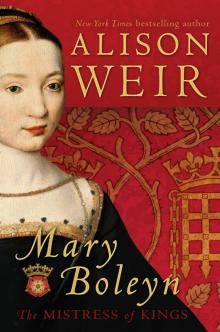 Mary Boleyn
Mary Boleyn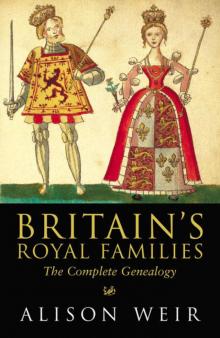 Britain's Royal Families
Britain's Royal Families The Tower Is Full of Ghosts Today
The Tower Is Full of Ghosts Today Life of Elizabeth I
Life of Elizabeth I Anne Boleyn A King's Obssession
Anne Boleyn A King's Obssession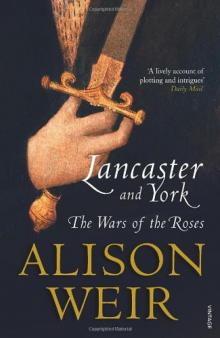 Lancaster and York
Lancaster and York Jane Seymour, the Haunted Queen
Jane Seymour, the Haunted Queen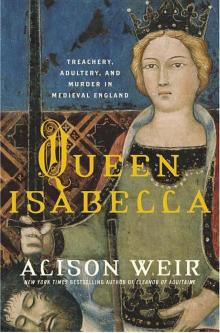 Queen Isabella
Queen Isabella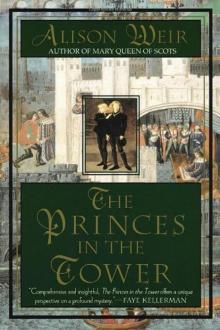 The princes in the tower
The princes in the tower